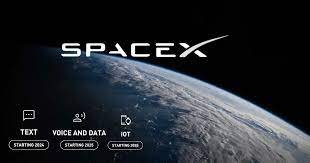SpaceX Launched First Batch of Starlink
In a monumental leap towards universal mobile phone connectivity, SpaceX, under the leadership of visionary entrepreneur Elon Musk, has launched the first batch of cutting-edge Starlink satellites designed to connect directly to cell phones. This groundbreaking initiative aims to eliminate cellular dead spots and provide seamless communication anywhere on Earth.
The recent launch saw 21 state-of-the-art Starlink satellites taking flight, with six specifically engineered to support the innovative ‘Direct to Cell’ service, a concept unveiled by SpaceX in 2022. The company envisions a future where individuals can enjoy texting, calling, and internet browsing from any location, whether on land, lakes, or coastal waters.
SpaceX’s Perspective of Global Leadership
 The primary objective of this endeavor is to enhance global connectivity and address the persistent issue of cellular dead spots. The six Starlink satellites with ‘Direct to Cell’ capabilities represent a pivotal step in SpaceX’s mission to revolutionize communication. The ambitious plan involves rigorous testing of these capabilities, initially using ordinary 4G LTE-compatible phones on T-Mobile’s network within the United States.
The primary objective of this endeavor is to enhance global connectivity and address the persistent issue of cellular dead spots. The six Starlink satellites with ‘Direct to Cell’ capabilities represent a pivotal step in SpaceX’s mission to revolutionize communication. The ambitious plan involves rigorous testing of these capabilities, initially using ordinary 4G LTE-compatible phones on T-Mobile’s network within the United States.
SpaceX obtained approval from US regulators last month to commence testing the satellites in collaboration with T-Mobile, signaling a significant milestone in the project’s development. The company has also formed partnerships with native telecom companies in various countries, including Australia, Canada, and Japan, highlighting the global scope of this initiative.
Elon Musk’s Desire to Innovate Technologies
 Elon Musk, a vocal proponent of this breakthrough technology, emphasized its far-reaching impact by stating, “This will allow for mobile phone connectivity anywhere on Earth.” However, he also provided a caveat, noting that while the technology supports extensive coverage with up to 7 megameters per beam, it does not pose a significant challenge to existing land-based cellular networks.
Elon Musk, a vocal proponent of this breakthrough technology, emphasized its far-reaching impact by stating, “This will allow for mobile phone connectivity anywhere on Earth.” However, he also provided a caveat, noting that while the technology supports extensive coverage with up to 7 megameters per beam, it does not pose a significant challenge to existing land-based cellular networks.
The initial phase of testing involves text messaging services, which are expected to go live across multiple countries later this year. This marks a crucial milestone as users will experience the convenience of sending texts from locations previously considered challenging due to poor connectivity.
Expansion to Iot Devices by 2025
SpaceX envisions expanding its services to include voice, data, and connectivity for Internet of Things (IoT) devices by 2025. This evolution aligns with the gradual activation of more ‘Direct to Cell’ satellites, promising a comprehensive suite of communication services accessible from virtually anywhere on the globe.
The integration of voice, data, and IoT connectivity is a strategic move that positions SpaceX as a key player in the future of global communication. The company’s vision extends beyond traditional mobile phone services, embracing the growing ecosystem of connected devices that characterize the modern world.
Starlink’s “Direct to Cell Phone” Satellites
The Starlink satellites, equipped with ‘Direct to Cell’ capabilities, offer more than just improved mobile phone connectivity. They represent a paradigm shift in how we approach communication, eradicating the limitations imposed by terrestrial networks and unlocking the potential for seamless connectivity in remote and challenging terrains.
As technology continues to advance, the role of satellites in global communication becomes increasingly pivotal. SpaceX’s foray into direct-to-cell satellite connectivity not only addresses current challenges but also anticipates future needs. The prospect of accessing reliable communication services from the most remote locations has implications for industries such as emergency response, navigation, and research in areas with limited infrastructure.
Looking Ahead
SpaceX’s launch of Starlink satellites with ‘Direct to Cell’ capabilities marks a transformative moment in the evolution of global communication. The prospect of mobile phone connectivity anywhere on Earth is no longer a distant dream but a tangible reality on the horizon. As the testing phase progresses and services go live, individuals and industries alike are poised to benefit from the boundless opportunities that this revolutionary technology brings to our interconnected world.











Comments 1